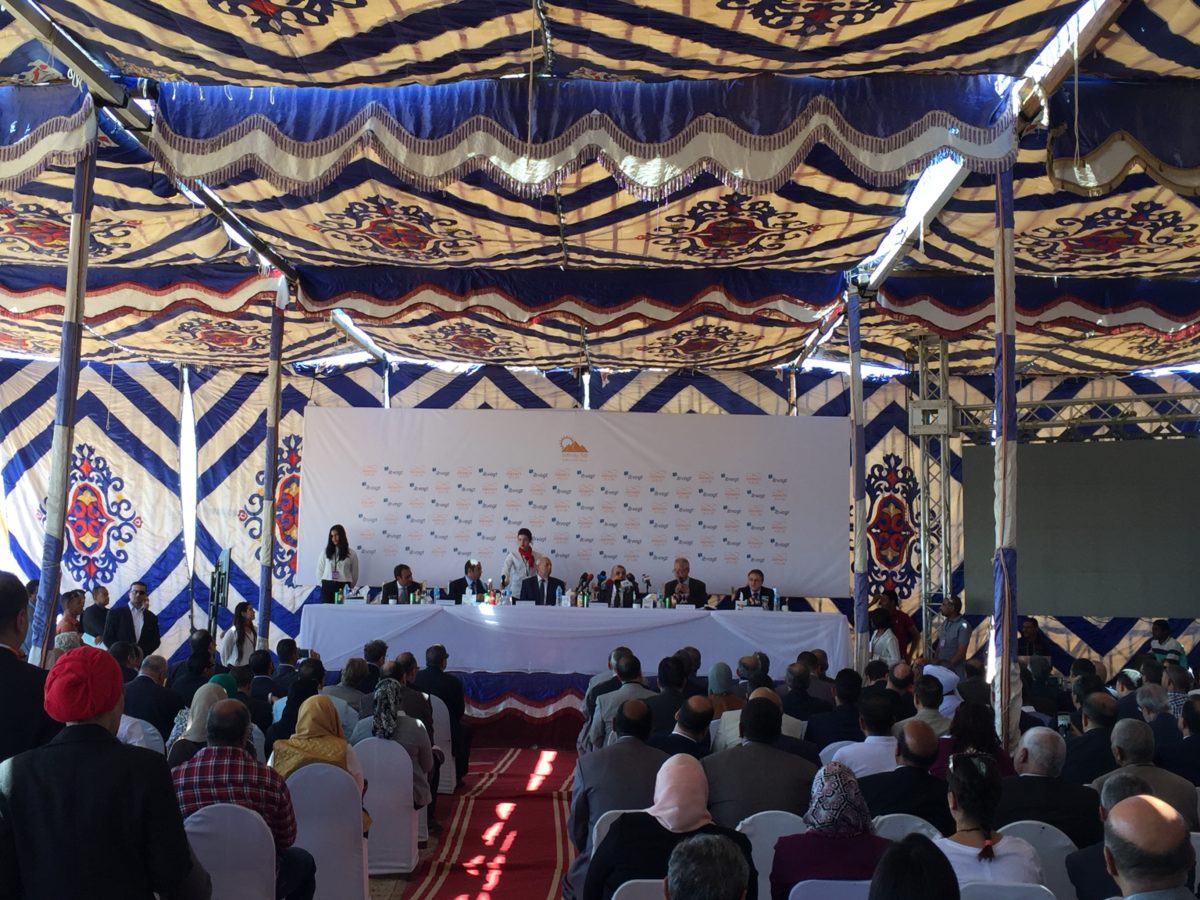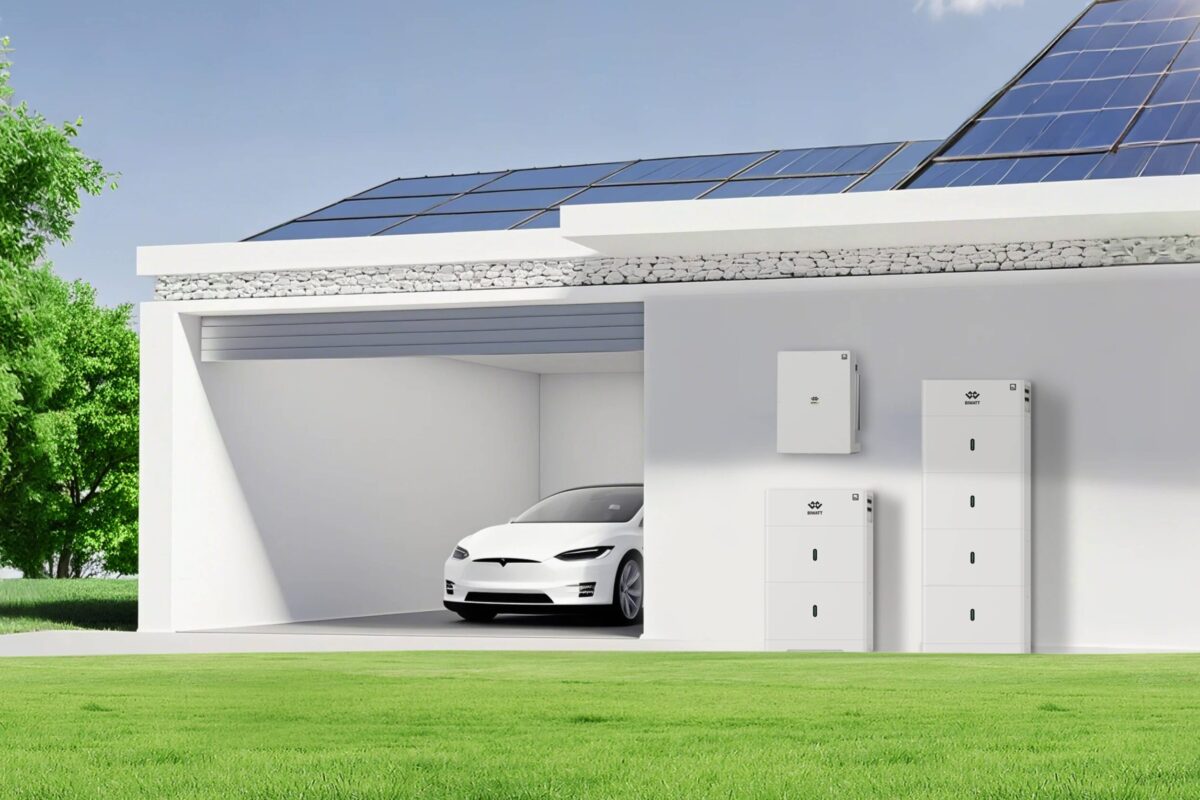Egypt’s Energy Minister, ib vogt, Infinity Solar and their partners gathered near the town of Benban in the Aswan Governorate, Southern Egypt, to inaugurate the country’s largest PV plant built to date.
The so-called Infinity 50 solar PV farm, with a capacity of 64.1 MW, is the result of the first round of Egypt’s feed-in tariffs (FITs). It will receive 14.34 U.S. cents per KWh for 25 years.
Goncalo Aleixo, ib vogt’s senior business development manager, who overlooked the implementation phase of the project, told pv magazine that “of 39 projects and 34 developers participating in the first round of Egypt’s FITs, this is the first project to come into completion.”
According to pv magazine information, a second PV project is also planned to be developed based on the first round of FITs. All other projects have been abandoned, however.
Despite a lavish first FIT, investors were discouraged by Egypt’s decision later to add some clauses to the FIT policy, for instance, calling for arbitration disputes to be handled in the country’s courts only. Such clauses increased the perceived risks of the projects, making investors unable to attract finance.
Egypt’s first round of FITs was announced in September 2014, and by July 2016, most of the development finance institutions and international lenders had pulled out of the projects.
Ib vogt was able to finance the project via a special structure designed by Euler Hermes, which manages the German government’s export credit guarantees. Hermes covers, which are the guarantees provided by the German government, suggested the finance structure we utilized for this project, said Aleixo.
After reaching financial close in October 2016, ib vogt and Infinity Solar were able to build the project by December 2017, “on time and on budget”, noted ib vogt’s managing director, Anton Milner, at the inauguration ceremony, which took place on Tuesday, March 13.
Mega 1.86 GW PV farm
With Egypt’s government issuing a second round of lower FITs at 8.4 U.S. cents per KWh, which exclude the clauses of the first round, international investors have flocked in the country.
Projects awarded under the second round of FITs will also be built in Benban, which, when complete, will form the the world’s largest solar PV complex, with 1.86 GW of installed capacity.
Ib vogt and Infinity Solar are partnering to develop some of this extra capacity. Specifically, the two partners, together with Lebanon's Phoenix Energy, are currently building a new 64.1 PV project, the so-called Phoenix 50.
Building work on Phoenix 50 started in January, and is expected to conclude this December.
Aleixo told pv magazine, ib vogt is also partnering with Infinity Solar and Egypt-based BPE Partners to build another two PV farms totaling 64.1 MW and 38.3 MW, respectively, in the same area.
Construction on all three projects – Phoenix 50, BSEP 50 and MMID 30 – is set to be completed by the end of 2018, bringing ib vogt’s portfolio in Egypt to 230.6 MW.
The project inaugurated this week used Trina Solar PV modules and Schneider Electric inverters. Aleixo said the project’s partners have not signed a contract for the modules to be used in the new plants yet, however he was able to reveal the three of them will employ Sungrow inverters.
Sufficient grid
Aswan is located about 650 km south of Egypt’s capital city, Cairo, and is connected to Cairo with a high voltage transmission line.
Infinity 50’s engineer, Mohamed Khaled told pv magazine the local network is sufficient to absorb the generated power from an 1.86 PV complex. However, he added, the government has also plans to build an additional transmission line connecting Aswan to Cairo.
Aleixo appeared to agree with Khaled, adding that the grid operator is now requesting all developers to examine how their PV plants will behave, if connected directly to the transmission network. These studies need to be completed before the projects can be connected to the grid.
The broad idea, commented Khaled, is for Egypt to become an energy exporter in the region, transporting power to other nations, such as Jordan, Saudi Arabia and Sudan.
Egypt has a goal of covering 20% of its total energy demand by 2020 from renewable energies. The challenge for the government now is to design the right electricity market, which moves away from its current monopolistic structure and encourages investors to enter in a competitive manner.
The January issue of pv magazine offered an in depth analysis of Egypt’s solar PV market, offering insights into all segments of the market.
This content is protected by copyright and may not be reused. If you want to cooperate with us and would like to reuse some of our content, please contact: editors@pv-magazine.com.



By submitting this form you agree to pv magazine using your data for the purposes of publishing your comment.
Your personal data will only be disclosed or otherwise transmitted to third parties for the purposes of spam filtering or if this is necessary for technical maintenance of the website. Any other transfer to third parties will not take place unless this is justified on the basis of applicable data protection regulations or if pv magazine is legally obliged to do so.
You may revoke this consent at any time with effect for the future, in which case your personal data will be deleted immediately. Otherwise, your data will be deleted if pv magazine has processed your request or the purpose of data storage is fulfilled.
Further information on data privacy can be found in our Data Protection Policy.